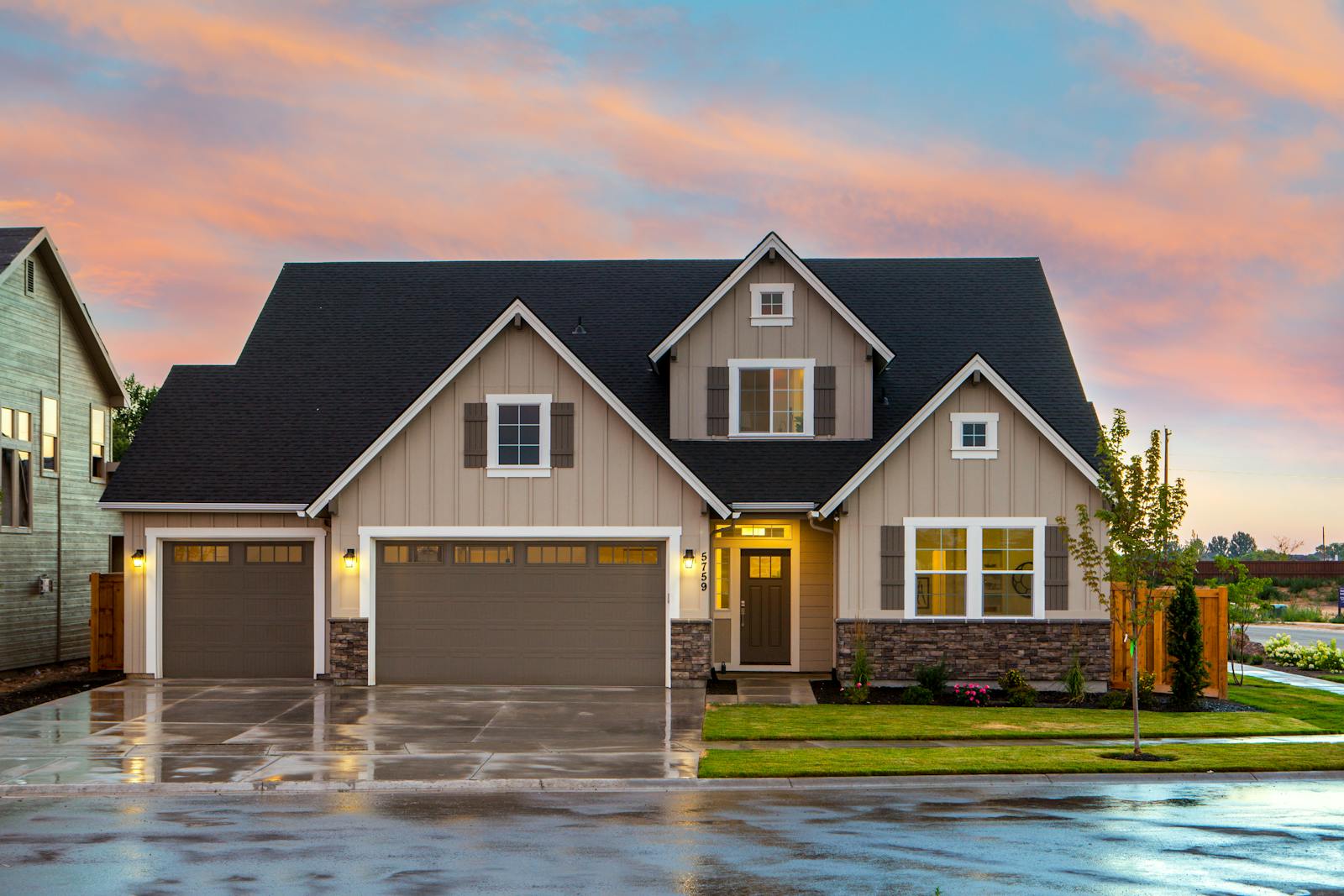Understanding Roof Replacement Costs
Roof replacement is a significant investment for homeowners, and understanding the associated costs is crucial for making informed decisions. This article will explore the various aspects of roof replacement costs, including average costs, factors influencing prices, financing options, material selection, and the importance of hiring licensed contractors. By the end of this discussion, readers will have a comprehensive understanding of what to expect financially when considering a roof replacement.
Average Costs Breakdown
National Averages for Roof Replacement
The average cost of roof replacement in the United States typically ranges between $5,000 and $15,000, depending on various factors. According to data from the National Roofing Contractors Association, the national average cost per square for roofing materials (100 square feet) can range from $200 to $600. This broad range accounts for different materials, labor rates, and regional market conditions that affect pricing. Additionally, the type of roofing material selected can significantly influence the overall cost; for instance, asphalt shingles tend to be the most cost-effective option, while materials like slate and tile can drive costs much higher.
It’s important for homeowners to prepare a budget that encompasses not only the direct costs of materials and labor but also any additional expenses such as permits, disposal fees for the old roof, and unexpected repairs that may arise once the roofing material is removed. Therefore, thorough planning and budgeting are essential for any roof replacement project.
Regional Variations in Pricing
Roof replacement costs can vary significantly from one region to another. For example, urban areas often experience higher labor costs due to increased demand for contractors and a higher cost of living. According to surveys, homeowners in metropolitan areas may pay upwards of 20% more than those in rural areas for similar roofing work. Additionally, regional weather conditions can affect material choices and installation practices, further impacting costs. Areas that experience heavy snowfall may require more durable roofing materials, which can drive the price up.
Furthermore, local building codes and regulations can influence costs. Homeowners should consult with local roofing contractors to understand specific pricing trends in their area, which will help in making a more accurate estimate for their roof replacement project. Understanding these regional nuances can help homeowners avoid sticker shock when obtaining quotes.
Cost Per Square Foot Analysis
The cost per square foot is a critical metric when evaluating roof replacement costs. Homeowners can expect to pay between $3.50 and $6.00 per square foot for a standard asphalt shingle roof. However, materials like metal roofing can range from $7.00 to $12.00 per square foot, while high-end materials like slate can exceed $20.00 per square foot. Calculating the total area of the roof will provide a clearer picture of what to expect in terms of costs.
To accurately estimate the cost, homeowners should measure their roof’s total square footage and multiply it by the cost per square foot of the chosen material. This straightforward calculation can provide a solid base for budgeting, although it’s advisable to factor in additional costs associated with the roof replacement process.
Factors Influencing Price
Roof Size and Pitch
The size and pitch of the roof are among the primary factors influencing the overall cost of replacement. Larger roofs require more materials and labor, which directly increases costs. A standard residential roof might range from 1,500 to 2,500 square feet, but custom homes can have significantly larger roofs that lead to higher material requirements and labor costs.
The pitch of the roof also affects pricing. Steeper roofs are more challenging and potentially dangerous to work on, requiring special safety equipment and increasing labor time. Some contractors may charge a higher rate for steep-pitched roofs due to the increased complexity and risk involved in the installation process.
Material Selection
Choosing the right roofing material plays a significant role in determining the total cost of a roof replacement. Asphalt shingles are typically the most cost-effective option, offering a good balance of price and durability. However, homeowners may be tempted to opt for more luxurious materials like metal, tiles, or slate for aesthetic reasons or longevity. These materials, while attractive and durable, often come with a higher price tag and may require additional structural support for installation.
Another important factor to consider is the warranty that comes with different materials. While cheaper materials may save money upfront, investing in higher-quality options may lead to lower costs over time due to reduced maintenance and replacement needs. Homeowners should weigh the initial costs against the long-term benefits of each material type when making their choice.
Labor Costs in Your Area
Labor costs vary by location and are often influenced by the local economy, the availability of skilled labor, and demand for roofing services. Homeowners can expect to pay anywhere from $50 to $150 per hour for professional roofing labor, depending on the region. During peak seasons, such as after severe weather events, labor costs may increase due to demand.
It’s advisable for homeowners to obtain multiple quotes from contractors in their area to gain a better understanding of the average labor costs. This not only helps in budget planning but also allows homeowners to identify reputable contractors who offer competitive pricing.
Additional Features and Customizations
Homeowners may desire additional features and customizations, such as skylights, chimneys, or ventilation systems, which can add significant costs to a roof replacement project. For instance, installing skylights can range from $800 to $2,500 each, depending on size and complexity. Similarly, adding ventilation systems can cost between $300 and $1,500, depending on the type and installation method.
While these customizations can enhance the functionality and aesthetics of a roof, it is essential for homeowners to consider these additional costs when budgeting for a replacement. It’s also worth noting that some features may be necessary for the longevity and performance of the roofing system, making them a valuable investment in the long run.
Home Improvement Ideas 2025: Ultimate Guide to Modern Remodeling, DIY Projects & Contractor Tips
Financing Options Available
Home Equity Loans
Home equity loans are a popular financing option for homeowners looking to replace their roofs. These loans allow homeowners to borrow against the equity they have built in their homes, often at lower interest rates compared to personal loans or credit cards. By leveraging the value of their property, homeowners can access substantial funds needed for a roof replacement.
However, it’s important to consider the risks associated with home equity loans. Since the loan is secured by the home, failure to repay can lead to foreclosure. Homeowners should carefully assess their financial situation and ensure they can manage the additional monthly payments before proceeding with this option.
Personal Loans
Personal loans can provide a flexible option for financing a roof replacement without putting the home at risk. Unlike home equity loans, personal loans do not require collateral, which can make them appealing for homeowners who do not wish to leverage their property. Interest rates on personal loans can vary widely, so it’s essential to shop around for the best terms.
While personal loans may have higher interest rates than home equity loans, they can still be a viable choice for those who prefer to avoid additional risk. Homeowners should perform due diligence to ensure they understand the terms and conditions of any loan they consider.
Government Assistance Programs
Various government assistance programs aim to help homeowners afford necessary repairs, including roof replacements. Programs such as the USDA Rural Development program offer funding for low-income families to improve their homes. Additionally, some cities provide grants or low-interest loans specifically for home repairs, including roofing projects.
Homeowners should research local and federal programs available in their area. It’s advisable to consult with a housing counselor or local government agency to navigate the options effectively. These resources can significantly alleviate the financial burden of a roof replacement, making it more accessible for homeowners in need.
Choosing the Right Materials
Comparative Costs of Various Roofing Materials
Selecting the right roofing material is crucial not only for aesthetic appeal but also for durability and cost-effectiveness. The following is a comparison of common roofing materials and their average costs:
| Material | Cost per Square Foot | Average Lifespan |
|---|---|---|
| Asphalt Shingles | $3.50 – $5.00 | 15 – 30 years |
| Metal Roof | $7.00 – $12.00 | 40 – 70 years |
| Tile Roof | $10.00 – $15.00 | 50 – 100 years |
| Slate Roof | $20.00+ | 75 – 200 years |
As seen in the table, asphalt shingles are the most economical option, making them a popular choice for many homeowners. However, for those willing to invest more upfront, materials like metal or slate can offer longevity and lower maintenance costs over time.
Longevity and Durability Considerations
When selecting roofing materials, longevity and durability are critical factors. While cheaper materials may be tempting, they often require more frequent replacements and repairs, leading to higher long-term costs. For example, metal roofs, though initially more expensive, can last significantly longer than asphalt shingles, often resulting in lower lifetime costs when maintenance and replacements are considered.
Homeowners should evaluate the climate in their area when selecting materials, as certain materials perform better in specific conditions. For instance, slate is highly durable but may not be suitable for areas prone to earthquakes due to its weight. Investing in materials that align with local climate conditions can enhance the roof’s performance and longevity, ultimately safeguarding the homeowner’s investment.
Importance of Hiring Licensed Contractors
Benefits of Professional Installation
Hiring a licensed contractor for roof replacement is essential for ensuring the work is done correctly and meets local building codes. Professional installers have the training and experience necessary to handle various roofing materials and installation techniques, which can prevent costly mistakes. Additionally, licensed contractors often carry insurance and warranties that protect homeowners from liability and potential future issues.
Professional installation can also enhance the longevity and performance of the roofing system. Contractors know how to properly install roofing materials to avoid problems such as leaks and premature wear, which can save homeowners time, money, and stress in the long run.
Risks of DIY Roof Replacement
While some homeowners may consider a DIY approach to save money, this option comes with considerable risks. Without the proper knowledge and experience, DIY roof replacement can lead to improper installation, resulting in leaks and structural failures. Additionally, safety risks are heightened when working at heights, and falls can lead to serious injuries or fatalities.
Moreover, DIY roofing may not comply with local building codes, leading to fines or the need for costly repairs down the line. Homeowners should carefully consider their skills and the risks involved before attempting a DIY roof replacement, as the potential savings may not outweigh the risks.
How to Choose a Reputable Contractor
Choosing the right contractor is crucial for a successful roof replacement. Homeowners should start by seeking recommendations from friends and family, as personal experiences can provide valuable insights into a contractor’s reliability. It’s also beneficial to check online reviews and ratings on platforms such as Angie’s List or the Better Business Bureau.
Once a list of potential contractors is compiled, homeowners should request detailed quotes and ask for references from past clients. A reputable contractor will be transparent about their pricing, timeline, and warranty options. It’s essential to ensure that the contractor holds the necessary licenses and insurance, as this protects the homeowner in case of accidents or issues during installation.
Conclusion
Roof replacement can be a daunting financial undertaking for homeowners; however, understanding the various costs, factors influencing pricing, financing options, and the importance of hiring professional contractors can make the process smoother. By carefully considering the choices available and planning accordingly, homeowners can protect their investment and ensure a successful roofing project.







